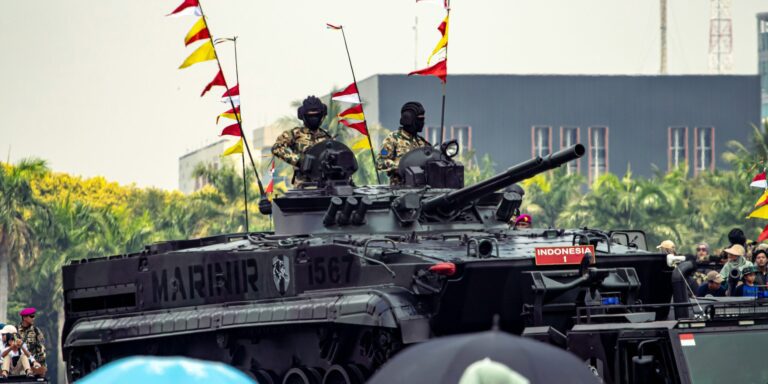WASHINGTON, D.C. — On June 14, 2025, President Donald Trump took center stage at a monumental military parade in Washington, D.C., to mark the 250th anniversary of the U.S. Army. The event, held in the heart of the nation’s capital, served as both a commemoration of the military’s rich history and a powerful demonstration of the United States’ advanced military capabilities. The parade featured a striking display of strength and innovation, with approximately 6,500 troops, 150 military vehicles, and 50 aircraft taking part in the festivities.
While the military’s historical importance was honored through the presence of veterans and traditional elements of the parade, it was the cutting-edge technology on display that stole the show. The parade emphasized the U.S. military’s ongoing modernization efforts, particularly with the integration of artificial intelligence (AI) and autonomous systems in combat operations. Among the most notable technological demonstrations were AI-enabled robot dogs and the highly sophisticated HIMARS (High Mobility Artillery Rocket System), both of which represent the next wave of technological advancements shaping the future of warfare.
The robot dogs, equipped with sensors and AI-driven capabilities, were showcased as part of the military’s effort to incorporate autonomous units that can perform a variety of tasks, including surveillance, reconnaissance, and logistics support. These robotic units highlight how the military is leveraging AI to enhance operational efficiency and reduce risks to human soldiers. The robot dogs’ agility and precision caught the attention of both military personnel and the public, offering a glimpse into how the U.S. Army is preparing to utilize these advanced technologies on the battlefield.
In addition to the robotic dogs, the HIMARS rocket systems also demonstrated the U.S. military’s commitment to maintaining a technological edge over potential adversaries. Known for their mobility and precision, HIMARS systems are capable of launching multiple guided rockets in rapid succession, providing the military with an invaluable tool for long-range strikes. The system is considered one of the most advanced artillery systems in the world, and its presence at the parade underscored the Army’s focus on enhancing firepower and responsiveness in future conflicts.
The display of such high-tech equipment served as a reminder of the ever-evolving nature of modern warfare, where artificial intelligence, robotics, and precision weapons are playing an increasingly pivotal role. As the U.S. military continues to integrate these technologies, the parade also highlighted the country’s investment in research and development to ensure its forces remain prepared for emerging threats in the global arena.
The 250th-anniversary celebration was not just a showcase of technological prowess; it also provided an opportunity for the public to reflect on the Army’s storied history. From its origins during the American Revolution to its current role as a global superpower, the U.S. Army has undergone significant transformations. The parade’s blend of historical symbolism and futuristic technology illustrated the balance between honoring tradition and embracing innovation.
The event also featured military units from various branches, including the Army, Navy, Air Force, and Marine Corps, reinforcing the notion that the United States’ strength lies not only in its technological advancements but also in the collective effort of its armed forces. Troops marched in synchronized formations, demonstrating discipline and readiness, while military aircraft soared above in perfect precision, signaling the unity of the U.S. military’s branches.
However, the technological displays raised important questions about the future of warfare and military ethics. As autonomous systems, including drones and AI-driven robots, become more integrated into combat, concerns regarding their use in military operations have grown. Experts have raised issues surrounding the potential for accidents, unintended escalation, and the ethical implications of using AI in life-and-death decisions. The U.S. military, however, has been proactive in addressing these concerns by implementing strict oversight and safety protocols for emerging technologies.
The U.S. military parade also serves as a reminder of the strategic importance of maintaining technological superiority in a rapidly changing world. As global power dynamics shift and new threats emerge, the U.S. must ensure its military forces are equipped with the tools necessary to maintain national security and defend its interests on the world stage. The integration of AI, robotics, and precision weaponry into the U.S. military’s arsenal signals a commitment to remaining at the forefront of military innovation.
While the event highlighted the future of warfare, it was also a day for the nation to honor the contributions of those who have served in the Army over the past 250 years. As military personnel, veterans, and their families gathered in Washington, D.C., the parade provided a moment of reflection on the sacrifices made by generations of soldiers who have defended the nation’s freedom.
As the U.S. Army prepares for the challenges of the next 250 years, the celebration of its past and the demonstration of its cutting-edge technology offered a glimpse into a future where innovation and tradition work hand in hand to ensure the security of the United States.
